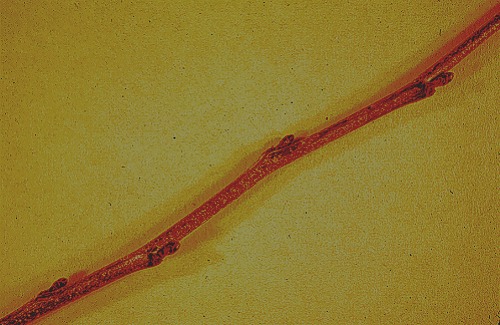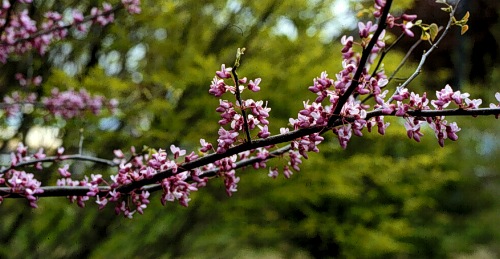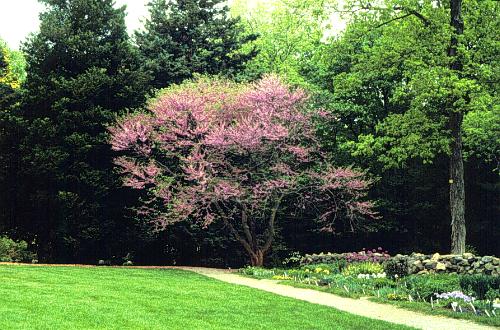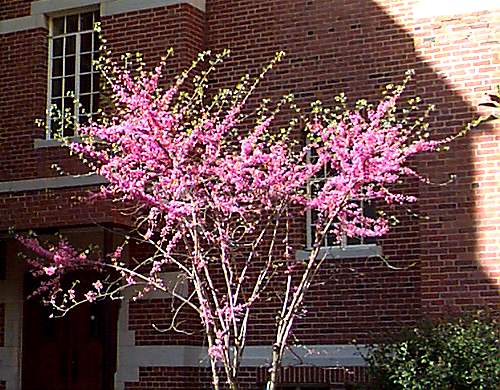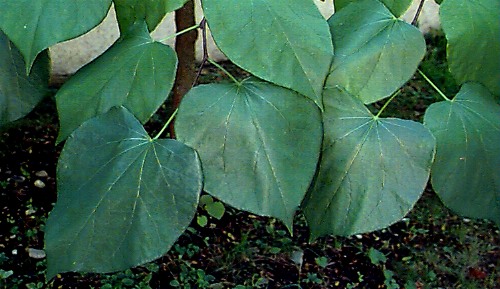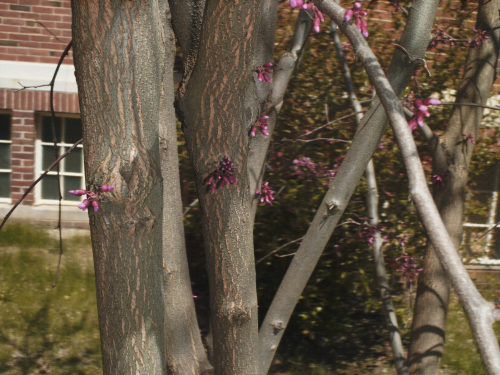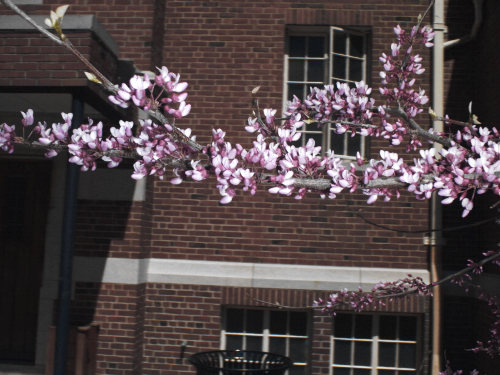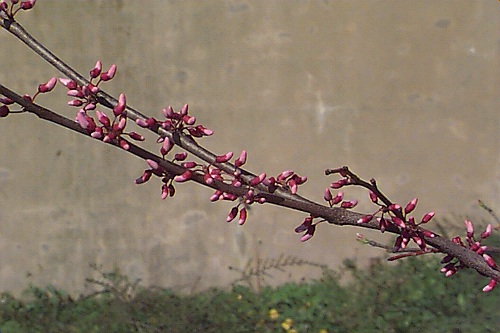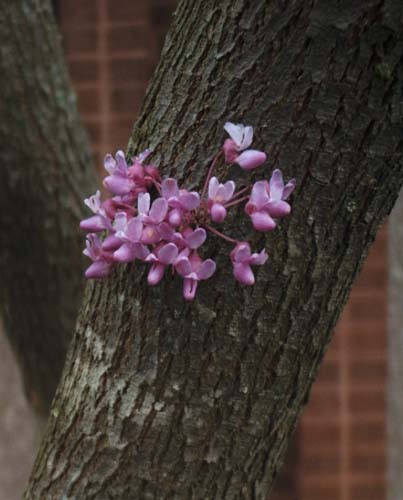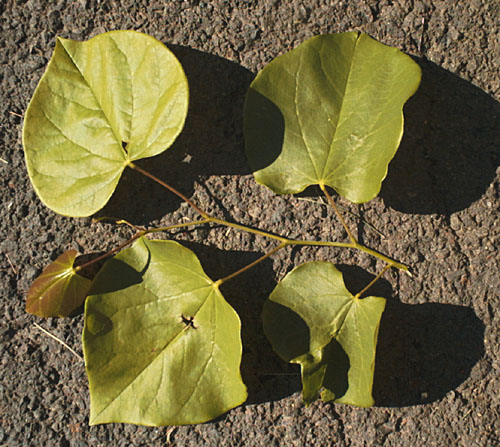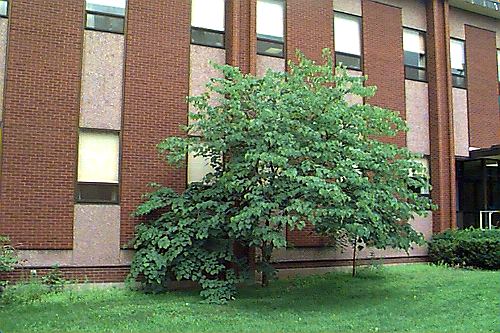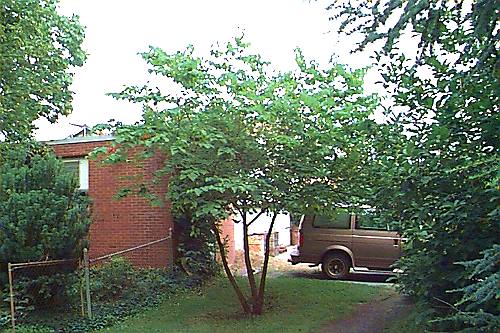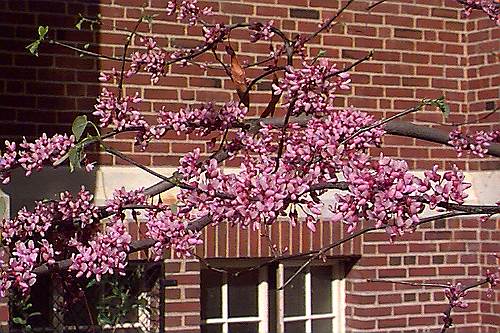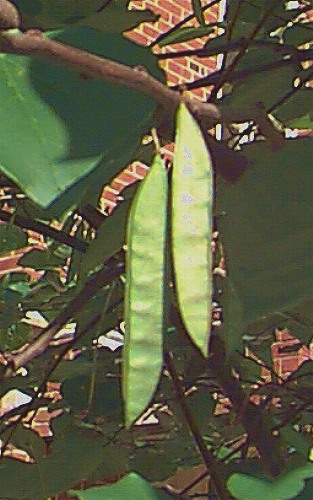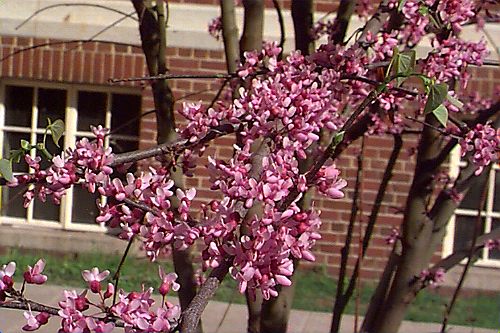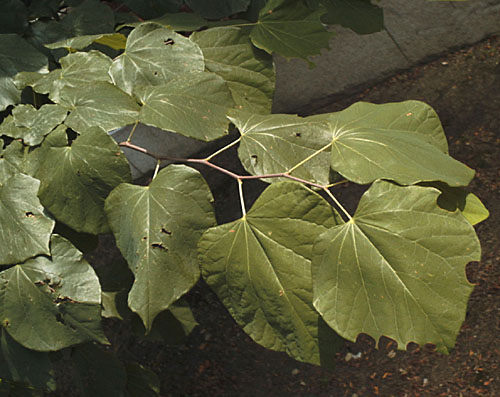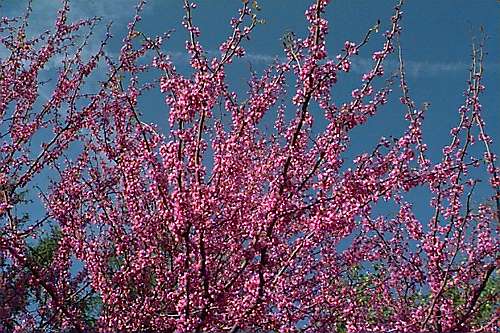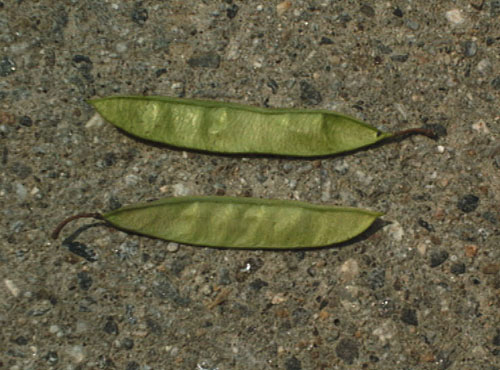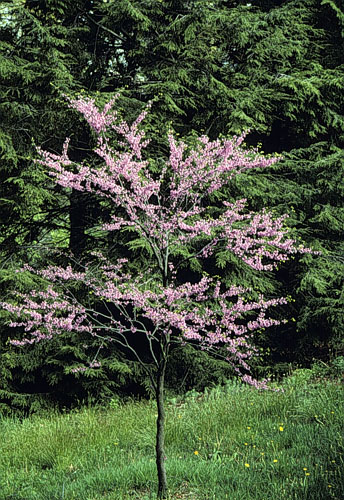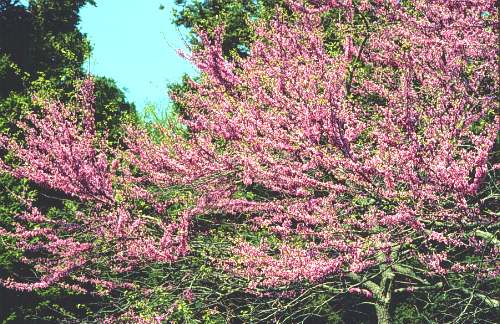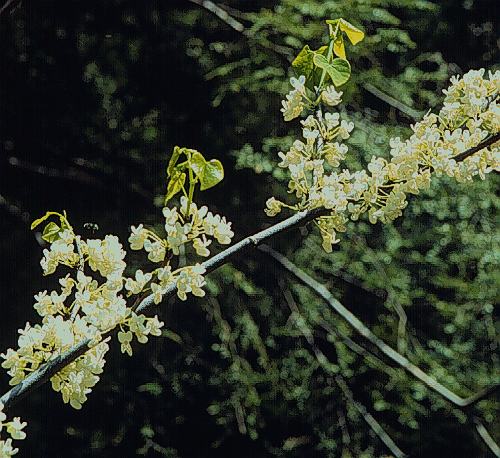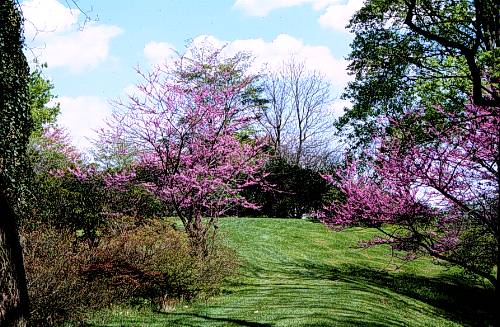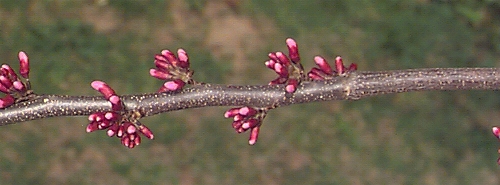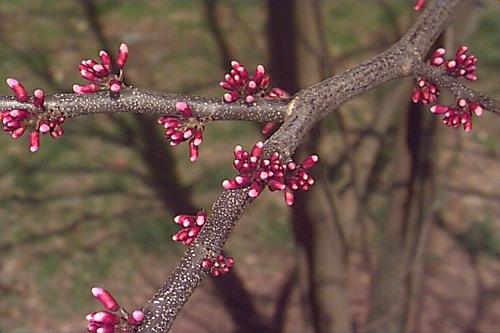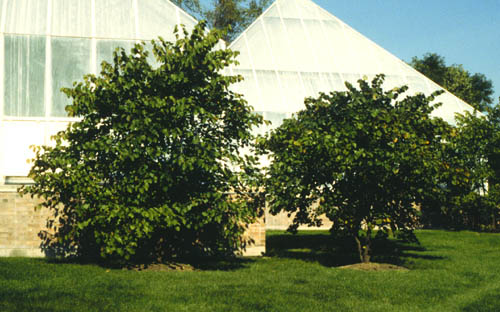Cercis canadensis
Eastern Redbud
Leguminosae
ExpandHabitat
- native to the southeastern and central United States, from New Jersey south
- hardy to zone 5 and protected, warm parts of 4
- proper choice of genetic material is necessary for success in zone 5 and colder
Habit and Form
- a small, deciduous tree
- 20' to 30' tall
- 25' to 35' wide
- shape is rounded to broad and flat-topped
- branching is upright and spreading to irregular
- main trunk is short, dividing into several large branches close to the ground
Summer Foliage
- alternately-arranged, simple leaves
- wide, heart-shaped leaves
- leaves are 3" to 5" long and wide
- leaves emerge bright green tinged red and mature to a dark green
- stems have a zigzag growth pattern
Autumn Foliage
- color is yellow-green
- can be a showy, bright yellow on some plants in some years
Flowers
- very showy
- small, purplish-pink pea-like flowers
- numerous and appearing before the foliage
- bloom time is late April to early may
- in clusters of 4 to 8
- often are borne directly on old branches and trunks as well as younger branches
- trees bloom heavily at a young age
Fruit
- flattened legume pods
- 2" to 3" long
- changes from green to dark brown in October
- often numerous and persistent
- possibly a detraction
Bark
- bark on stems is glabrous and reddish-brown to dark brown
- older branches have a scaly dark brown bark that exfoliates some to reveal orangish inner bark
- somewhat ornamentally appealing, especially when coupled with the branching habit
Culture
- full sun to light shade
- likes a moist, well-drained, soil, but is adaptable to most soils that are not permanently wet
- avoid very dry and hot locations
- transplant young trees for best success
Landscape Use
- lawn tree
- specimen
- for small residences
- for showy spring flowering
- naturalized or woodland plantings
- works well in small groupings or groves
- patio tree
Liabilities
- lack of cold hardiness if proper genetic material isn't used
- twig kill and dieback in zones 5 and 4
- wood can be brittle with trees splitting at crotches
- persistent fruits can be objectionable
- canker
- tends to be short-lived, especially when exposed to chronic stresses
ID Features
- zigzag stem growth
- heart-shaped leaves
- numerous rosy-pink pea-like flowers
- short main trunk
- scaly dark brown bark with orange inner bark
- broad rounded to flat-topped shape when mature
- persistent legume pod fruits
- flower buds stalked and in clusters
Propagation
- by seed
- cultivars are bud grafted or micropropagated
Cultivars/Varieties
'Alba' and 'Royal White' - Two forms with white flowers and foliage that lacks any purplish pigmentation as it emerges. Otherwise similar to the species in size and habit.
'Covey' (Lavender Twist™) - A weeping form that has stiff, contorted, arching branches.
'Forest Pansy' - A very showy cultivar where the foliage emerges a vivid burgundy color. As the foliage matures the underside of the leaves remains purple-red and the upperside turns dark green. Flowers are more purple than the species. This cultivar may not be reliably hardy below -10 to -15oF, although hardiness information is somewhat conflicting.
'Pinkbud', 'Withers Pink Charm' and 'Rubye Atkinson' - Forms that are similar to the species except that the flowers are clear pink. This flower color may be easier to combine with other colors in the landscape.
'Silver Cloud' - Has variegated foliage that is irregularly blotched and splashed with white. Green reversions occur and must be removed. Benefits from shading and a cool location. Does not flower heavily. A specimen or curiosity plant.
ssp. texensis 'Oklahoma' - Flowers are a deep wine-red. Leaves are thick, leathery, lustrous and have a wavy margin. Habit is more dense and compact than the species. Not reliably hardy in areas colder than zone 6.
ssp. texensis 'Traveller' - A weeping form that forms a mound only 5' tall and wider. Probably not hardy in areas north of zone 6.
